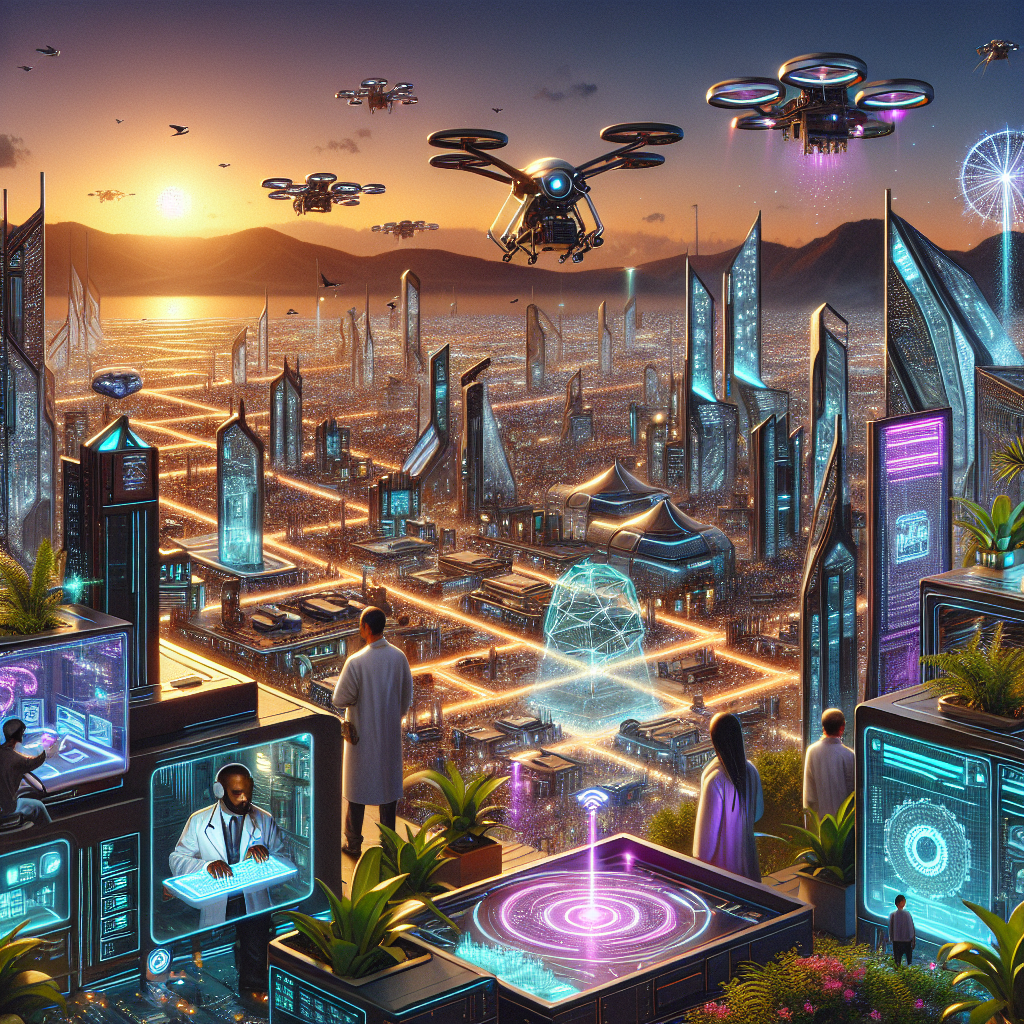The Technology Revolution: Navigating the AI-Driven Future
Introduction
The technology revolution we are experiencing today is poised to reshape every facet of our society, from the way we work to the way we interact with each other. This transformation, primarily driven by advancements in artificial intelligence (AI), echoes the monumental shifts seen during the Industrial Revolution. For political leaders and policymakers, understanding and navigating this change is paramount but fraught with challenges.
The AI Revolution: A Game Changer
Artificial Intelligence is the cornerstone of the current technological revolution, fundamentally altering our economy, society, and daily lives. Similar to the Industrial Revolution, AI's impact is ubiquitous, touching various sectors, and prompting profound changes.
Tony Blair, former Prime Minister of the United Kingdom, emphatically argues that the AI revolution is the biggest technological change since the Industrial Revolution. In a conversation about this ongoing revolution, he highlighted the criticality of political leaders comprehending the scope and implications of AI. To capitalize on its opportunities and mitigate its risks, a thorough understanding and specific policy measures are essential. This is no superficial task; it requires deep, nuanced engagement and strategic foresight.
Challenges in Policy Making
One of the significant hurdles for leaders is the conceptual gap between ambitious visions and concrete policy actions. Many leaders are elected on the premise of being change-makers, promising sweeping reforms and advancements. However, this promise often falters as they struggle to translate broad visions into tangible, actionable policies.
Blair exemplifies this by discussing the disparity between the advancements in market services and public sector services facilitated by the IT revolution. While the private sector has thrived, leveraging technology for tremendous productivity gains, the public sector has lagged. This historical context raises pertinent questions about how AI should be integrated into public services like healthcare and education. Should these sectors be privatized to harness AI's full potential, or can the public sector innovate sufficiently to keep pace?
Reimagining the State
A critical aspect of embracing the technological revolution involves reimagining the role of the state. Historically, the minimalist state of the 18th century evolved into the more interventionist and expansive state of the late 19th and early 20th centuries. Today, Blair advocates for yet another transformation – a strategic state that sets frameworks and fosters innovation and competition while safeguarding public interests.
This reimagined state wouldn't merely hand over responsibilities to the private sector but would act as a regulator and enabler. Governmental frameworks would provide the structure within which private enterprises could innovate, ensuring that technological advancements serve the public good. This balance is delicate and requires a nuanced approach to policy-making.
Innovation in Public Services: Education and Healthcare
The integration of AI in public services presents both immense opportunities and significant challenges. For instance, in education, AI has the potential to revolutionize how students learn, offering personalized and adaptive learning experiences. Initiatives like Khan Academy already demonstrate how technology can cater to individual learning paces and styles, ensuring that no student is left behind.
However, systemic reform is necessary to fully realize these benefits. This includes not only adopting new technologies but also restructuring educational frameworks to support continuous innovation. Similarly, in healthcare, AI can transform service delivery by providing AI-driven diagnostics and treatment plans. The concept of an AI doctor is no longer a distant dream but an approaching reality.
The challenge lies in establishing a robust framework within which AI operates, ensuring ethical considerations, data privacy, and equitable access. This framework should empower healthcare professionals to focus on complex, human-centric tasks, enhancing overall service quality and efficiency.
Read more on the potential of AI in healthcare
The Future of Work and Economy
The impact of AI extends beyond public services into the broader economy and workforce. Automation and AI-driven processes are reshaping industries, leading to job displacement in some areas while creating new roles in others. This transition necessitates a proactive approach to workforce reskilling and upskilling.
Governments and businesses must collaborate to prepare the workforce for this shift, investing in education and training programs that equip individuals with the skills needed in an AI-driven economy. The focus should be on fostering creativity, critical thinking, and adaptability – skills that AI cannot easily replicate.
Conclusion
The AI-driven technological revolution represents an unparalleled opportunity and a formidable challenge. For political leaders, the task is to navigate this landscape with vision and pragmatism, translating broad ambitions into specific, actionable policies. Reimagining the role of the state and fostering continuous innovation in public sectors like education and healthcare are pivotal steps in this journey.
As we stand on the brink of this transformative era, the choices we make today will shape the future of our societies and economies. Embracing AI's potential while safeguarding public interests requires a strategic, balanced approach – one that is informed, inclusive, and forward-thinking.
Related News
- AI: The Thrilling Frontier of Human Ingenuity and Technology
- The Evolution of AI: A Journey from Prediction to Reality
- The Potentials and Perils of AI: A Philosophical and Practical Exploration
- The Future of AI: Innovations, Challenges, and Uncharted Territories
- The Complex Dynamics of Political Leadership and AI Governance
